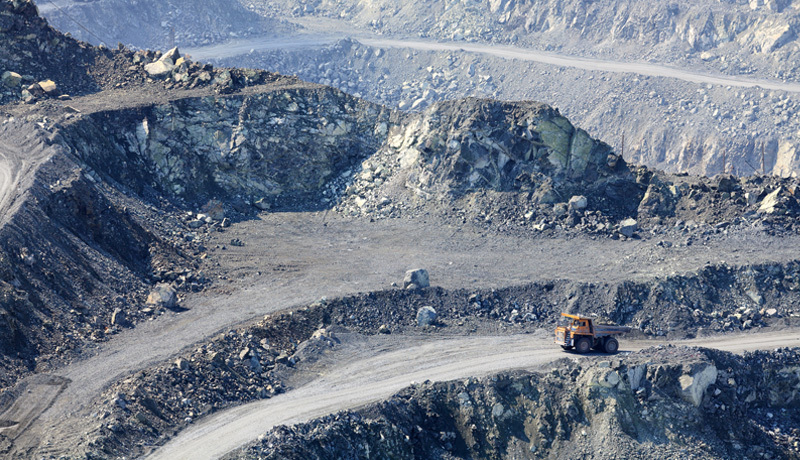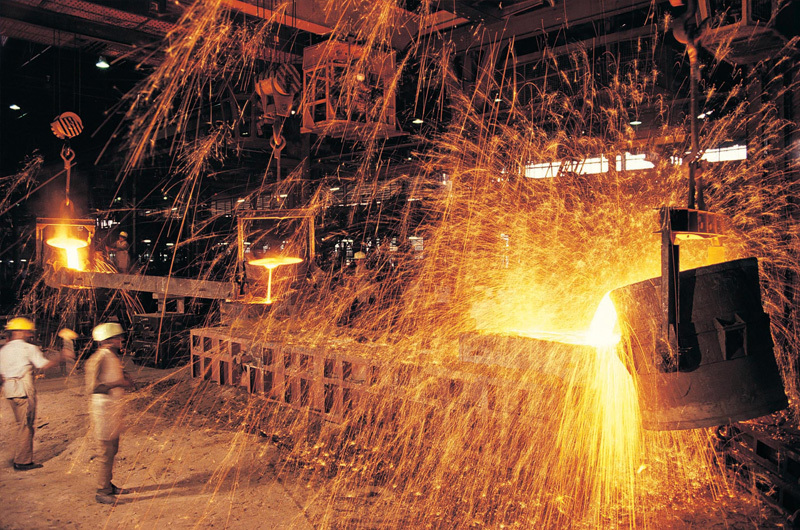
Mining and Metallurgical Industry
The application of industrial gases in the field of mining and metallurgy is extremely important, as it runs through multiple links such as ore mining, smelting, and processing, providing strong support for efficient, safe, and environmentally friendly production in the mining and metallurgical industry.
◎ Application in Mining Operations →
GUIDA GAS
Application in Mining Operations
Mine ventilation: Mine ventilation is an important link in ensuring safe production in mines. By injecting fresh air into the mine, toxic and harmful gases and dust are discharged to maintain the freshness and safety of the air inside the mine. Common ventilation methods include natural ventilation and mechanical ventilation, with mechanical ventilation often using compressed air or inert gases such as nitrogen as power sources.
Blasting operation: Blasting operation is one of the commonly used mining methods in mining. Combustible gases such as oxygen and acetylene are commonly used in blasting operations, where they are mixed and ignited to produce high-temperature and high-pressure gases, thereby crushing ores. In addition, inert gases such as nitrogen are also commonly used for safety protection in blasting operations to prevent equipment and personnel from being harmed by shock waves and flames generated by explosions.
Safety monitoring: During the mining process, real-time monitoring of gas concentration, temperature, humidity, and other parameters in the mine is required to ensure safe production. High tech equipment such as online gas analysis systems are commonly used for this purpose, which can monitor the gas composition and concentration in the mine in real time, detect abnormal situations in a timely manner, and issue alarm signals.

Application in Metal Smelting
Smelting reaction: Oxygen is one of the commonly used gases in the metal smelting process. During the ironmaking process, oxygen is used for preheating and enhancing the reduction reaction of blast furnace gas; In the steelmaking process, oxygen is used for top blowing, bottom blowing, and stirring operations to increase furnace temperature and reaction rate. Hydrogen is also commonly used in metal smelting processes as a reducing gas to reduce metal oxides to metals.
Temperature control: Gas can also be used for temperature control in metal smelting processes. For example, by adjusting the oxygen flow rate and concentration inside the blast furnace, the combustion rate and temperature inside the furnace can be controlled; During the steelmaking process, the furnace temperature and smelting speed can be controlled by adjusting the amount and speed of oxygen injection.
Waste gas treatment: During the metal smelting process, a large amount of waste gas is generated, which contains harmful substances such as sulfur dioxide and nitrogen oxides. These exhaust gases need to be treated before they can be discharged into the atmosphere. The commonly used exhaust gas treatment methods include absorption method, adsorption method, catalytic oxidation method, etc. In these methods, gas is often used as a carrier for absorbents or catalysts.
Application in Metal Processing
Cutting: Combustible gases such as oxygen and acetylene are commonly used in the cutting process of metals. After mixing, they ignite to produce a high-temperature flame, which can quickly melt the metal and cut it open.
Welding: Gases such as argon, helium, and carbon dioxide are commonly used in the welding process of metals. They can protect the weld seam from the influence of oxygen, nitrogen, etc. in the air, thereby ensuring the welding quality. In the welding process of stainless steel, argon gas is often used as a protective gas.
Spraying: Inert gases such as nitrogen are commonly used in the spraying process of metals. They can prevent the spraying material from reacting with oxygen in the air at high temperatures, thereby ensuring the quality of spraying.
Cleaning: During metal processing, it is often necessary to clean the metal surface to remove impurities such as oil and dust. Inert gases such as nitrogen are commonly used for this purpose because they do not react with metals and are easy to remove.
The application of industrial gases in the field of mining metallurgy is extremely extensive and important. It not only improves the production efficiency and product quality of the mining and metallurgical industry, but also promotes the development of environmental protection and energy conservation in the industry.


